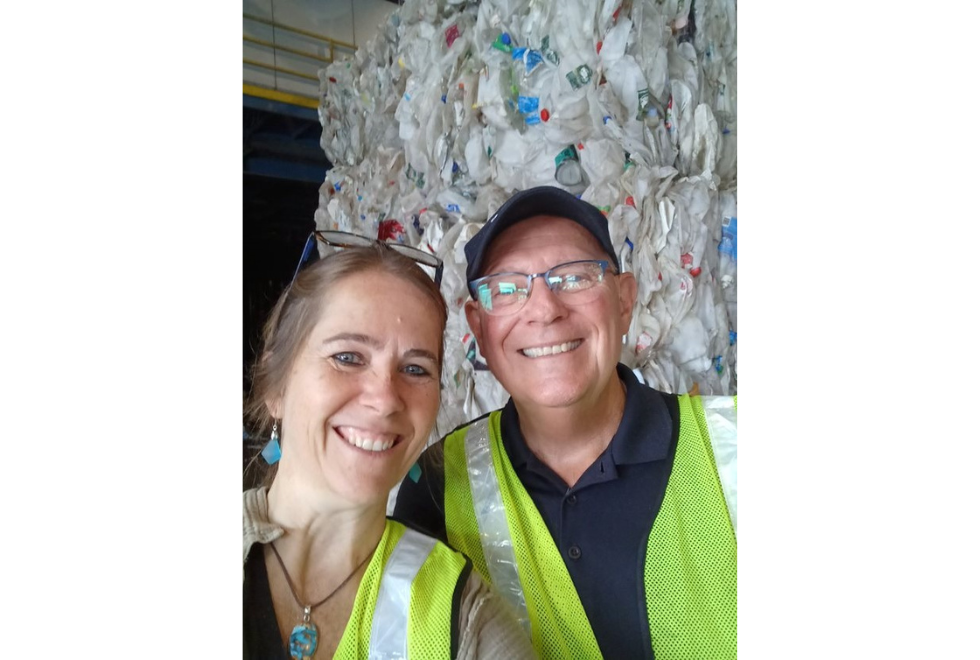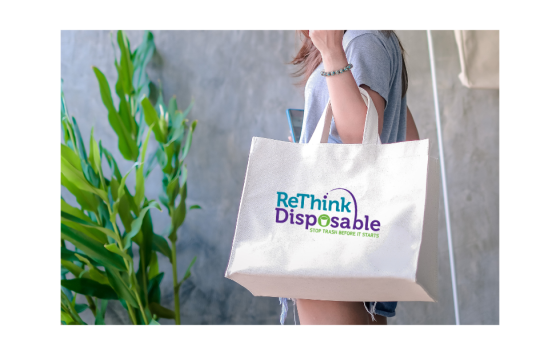
At Clean Water Action we believe in reducing trash before it starts. We all want to do the right thing by recycling, but unfortunately recycling is not always the best solution for our health or planet.
Recyclability of products and containers are not all created equally.
What a product is made of dramatically affects the amount and rates of its recyclability. Paper and cardboard are the most recyclable, followed by metal and glass, with plastics being abysmal. In general, products made from raw materials that are more uniform throughout are easier to recycle.
According to U.S. Environmental Protection Agency (EPA), the average American creates nearly 5 pounds of trash per day, annually about the weight of a grizzly bear. Unfortunately, only 1.5 of the 5 pounds gets recycled. Clean Water Action, in coalition with other environmental groups, is working to hold manufacturers responsible for using less plastic in packaging which will significantly reduce our overall waste. If you want to learn more about this, go to Clean Water Action’s Extended Producer Responsibility Fact Sheet.
Some countries are doing a much better job with recycling than the United States. These countries use less packaging and make it easier to recycle by providing bins to separate materials both in homes and communities. This prevents cross contamination of different materials - resulting in less waste and better/more recycling. Many countries have successful programs that incentivize recycling companies and manufacturers to send less waste to landfills or incinerators. Some have banned single-use plastic products all together.
Bottles
In the United States, generally we recycle only 32% of our waste while Germany and Austria recycle 56% and 54%, respectively. In the ten states that have a Deposit Return System (commonly called a Bottle Bill), they recycle at a much higher rate (on average 60% and as high as 74% in Maine). New Jersey was the first state (law passed in 1987) to require every state resident to recycle but our municipal solid waste recycling rate is only 40%. Clean Water Action is working to get a Bottle Bill in New Jersey to increase our recycling rates.
Paper
In general, paper products are recycled the most due to being relatively cheap and easy to do. Recycling paper also generates fewer greenhouse gas emissions and uses less water than virgin paper production. Approximately 3 tons of virgin timber remain standing for every ton of virgin paper avoided. In the United States, 68% of paper is recycled. The rest is landfilled and incinerated. Half of the paper recycled is turned into cardboard, the rest becomes tissue paper, napkins, toilet paper and paper towels. On average, paper can be recycled up to 7 times before the fibers become too short and are turned into egg cartons which can be composted.
Metal
Metal recycling is a bit more complicated to analyze due to the numerous types of metals but unlike paper it can be endlessly recycled as long as it is not co-mingled or adhered to other materials. Unfortunately, many scrap yards are old and lack the technology to differentiate plastic from metals or have the time/ability to pull apart different materials within a single product. For instance, cars and washing machines have a high rate of recyclability but some components are adhered to each other making it inefficient to separate and locally recycle. Thus, many scrap yards send excessive recycling waste overseas or into their waste stream. The European Union in 2020 set standards for end-of-life vehicles (ELVs) to help make the automotive sector more circular.
Why is recycling metal important? Recycling metal replaces the need to produce virgin metal which in turn preserves our natural resources like coal and iron ore. It is also cleaner for the environment. For instance, a ton of recycled aluminum prevents nine tons of CO2 emissions, a potent greenhouse gas and global warming agent, from being released into the atmosphere. Although aluminum is easily recyclable, 7 million tons of aluminum are still not being recycled each year. Aluminum cans, for instance, can take 500 years to decompose yet if recycled could be back as a new drink container in as little as 60 days, using 95% less energy at a cheaper cost.
Glass
Glass has an endless ability to be recycled, is easily done and cheaper than making it from virgin materials (sand and limestone). Despite the ease of recycling, only one-third of glass gets recycled. This is largely due to being mixed with other materials and once broken making it more difficult to separate. Many communities do not even attempt to collect glass.
Plastic
Plastic recycling, on the other hand, has been a complete failure. Recent studies by Beyond Plastics show that only 5-6% of all plastic is actually recycled. By 2025, Greenpeace and others have estimated that there will be one ton of plastic in the ocean for every three tons of fish, and in 2050 there will be more plastic than fish in the oceans if we continue on our current trajectory. The United States alone throws away 2.5 million plastic bottles every hour.
There are numerous types of plastic (labeled #1-7 within a triangle on many containers). Each type of plastic is made from different substances – making separation and recycling nearly impossible. Clean Water Action is working to have New Jersey join California and Washington, as well as Washington DC, Denver, Chicago and New York City, in adopting a “Skip the Stuff” policy requiring restaurants and online ordering to only provide plastic cutlery and certain single-use food ware upon request.
Furthermore, toxic air pollution is generated both in the creation as well as the recycling of plastics. Communities, predominantly consisting of low-income people of color, closest to these facilities are harmed the most.
As seen by two recent accidental disasters, many other people and communities are affected as well. The train derailment in East Palestine, Ohio on 2 February 2023, headed for New Jersey, had five rail cars full of highly flammable and toxic vinyl chloride. Vinyl chloride is a chemical used to create PVC pipes, wire coatings, vehicle upholstery and plastic kitchen ware. Other products could and should be used instead of vinyl chloride. For instance, copper (recycled or virgin) is a great longer lasting replacement for PVC pipes. On 11 April 2023 a huge fire broke out at an abandoned plastic recycling facility in Richmond, Indiana. The fires, smoke and toxic chemicals released during both of these recent disasters brought harm to people and the environment, including farms and waterways. Exposure can cause permanent liver, kidney, lung, spleen, blood, and nervous system damage.
Clean Water Action and other environmental organizations made a dent in the fight against plastic pollution. In May 2022, New Jersey’s Plastic Bag Ban went into effect - eliminating 8.4 billion single use plastic bags from the waste stream annually!
While this landmark policy is significant, we need to continue to dramatically reduce the use of non-essential plastics.
ReThink Disposable, part of Clean Water Action/Fund, is working across the country to help restaurants, schools, soup kitchens and other institutions reduce single-use foodware and replace them with reusables. This conversion is not only beneficial to the environment by reducing toxins going into our air, water and land but also is saving valuable money for the institutions by not constantly needing to purchase new disposable wares.
Clean Water Action is also now co-leading an effort to get a Deposit Return System (aka Bottle Bill) in New Jersey.
This would enable significantly more containers (bottles and cans made of plastics, metal, and glass) to be recycled. Better incentives are needed to encourage the use and better recycling of metal, paper and glass while phasing out plastics as much as possible. Passing a “bottle bill” is another way to increase the ease and ability of recycling while fostering reuse/refill approaches in more benign metal and glass containers. Producing and using less packaging, especially plastics, while recycling as much of the rest is best! Learn more here.



